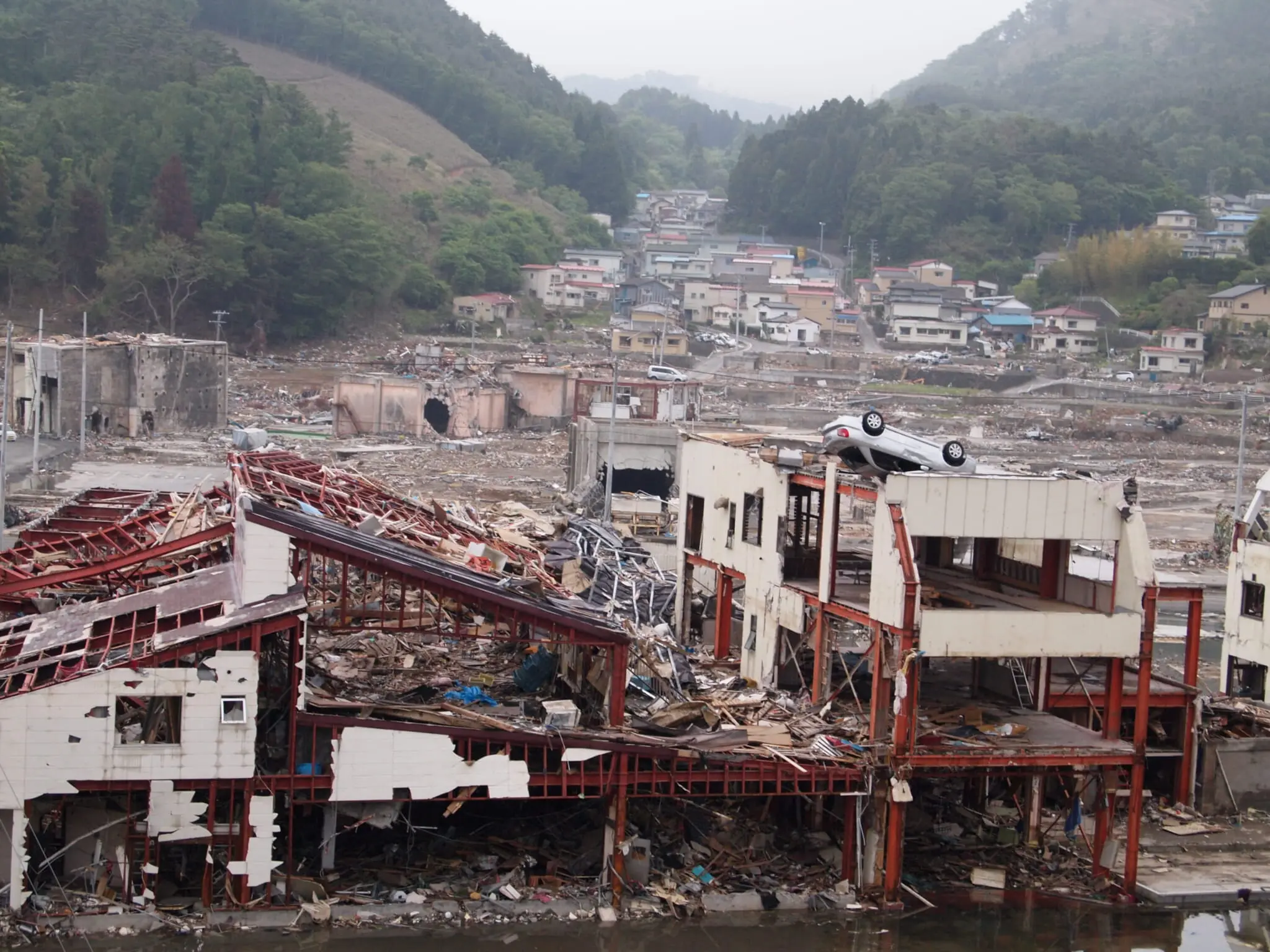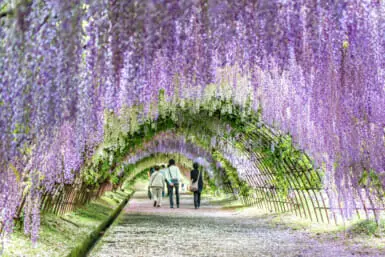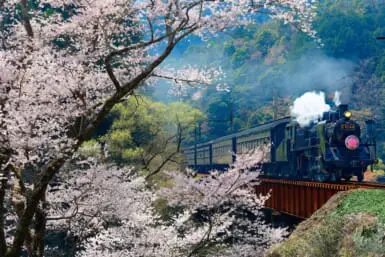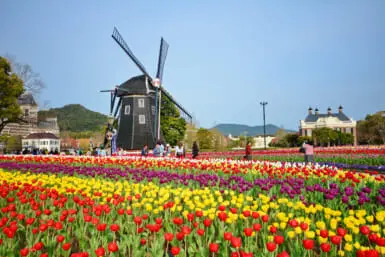One of the first things visitors see when they leave the train station in Onagawa, Miyagi Prefecture, is the ocean. In this small fishing town of 5,900 residents, the water’s edge begins just beyond a downward sloping plaza of shops. On a recent scorching Sunday in early September, the place is abuzz with activity. Families fish for sardines, kids practice skateboard jumps at a skate park and a rock band plays in a nearby field. Tourists and locals mix in the shops on the bay-front plaza. Inside the airy modern train station’s bathhouse, seniors are enjoying a revitalizing mid-afternoon soak. It’s a picturesque scene – the sea, the festive crowds, the sense of a promising future. And Onagawa’s residents don’t take any of it for granted.
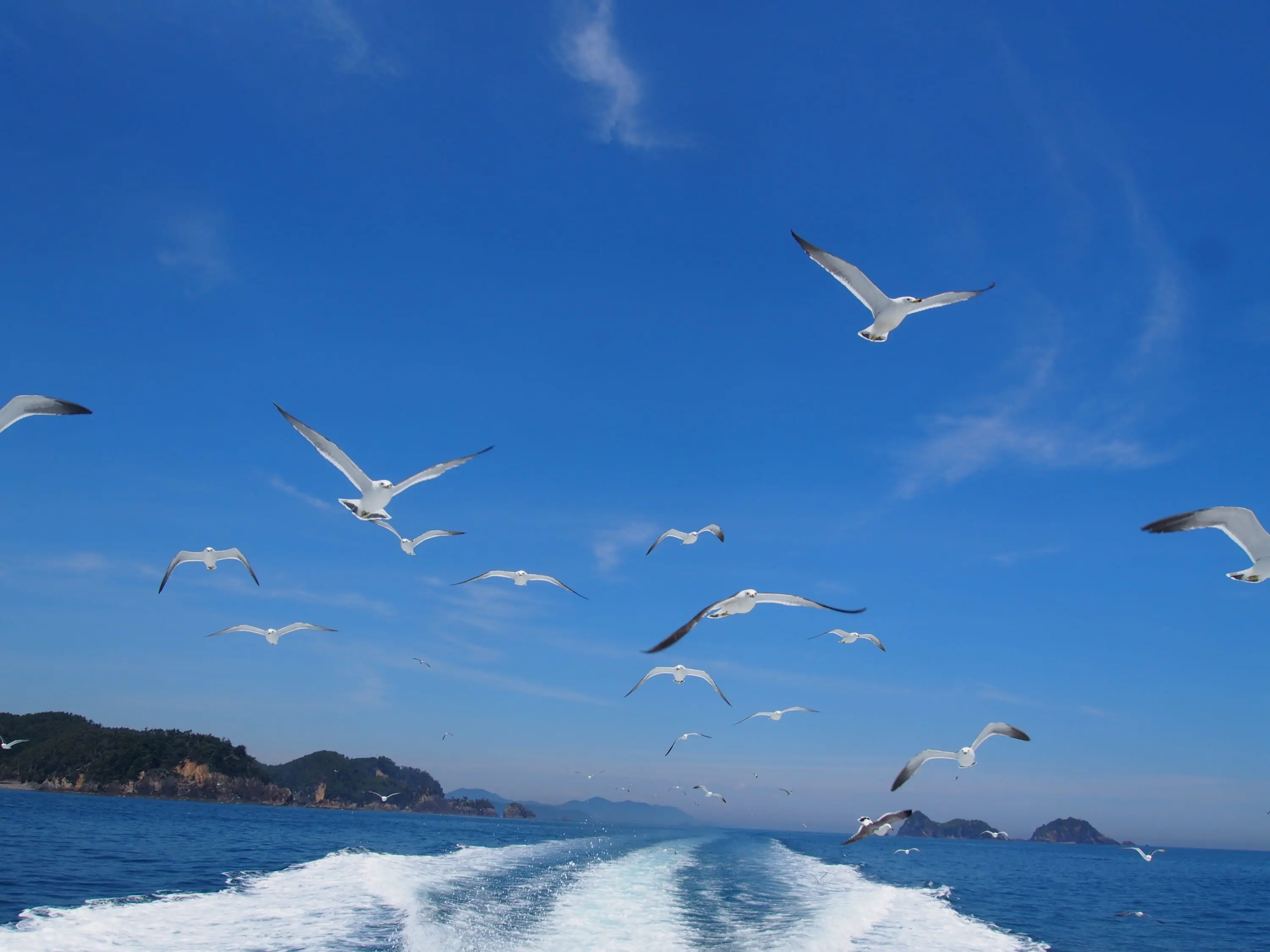
Black-tailed gulls chase a fishing boat in Onagawa Bay
Defiance Against Defenses
The 2011 earthquake and tsunami that laid waste to much of Japan’s northeastern coastline hit Onagawa hard. The 15-meter waves left more than 800 of the town’s residents dead or missing (making up roughly 8% of the 10,000 inhabitants) and almost every home was damaged or swept away. The tidal surge deposited cars on top of buildings, boats far from shore and commuter train cars on a hill above the twisted tracks. Eventually, Miyagi prefectural officials settled on a public-works solution to minimize future damage and casualties in Onagawa and other communities: build a seawall.
But Onagawa residents resisted. A wall wouldn’t necessarily stop a tsunami and might even add to locals’ fear and anxiety about living there. Not having a view of the ocean could also leave the town vulnerable: What if residents weren’t able to see the tides suddenly and dramatically draw back –– a possible tsunami warning sign? More importantly, such an imposing structure would distance residents from the source of many of their livelihoods. “To live, we need to be able to see the ocean,” said Takuma Endo, who works at the Onagawa Tourism Association.
Onagawa took matters into its own hands, devising a plan to carve out a nearby mountain and rebuild on higher, safer ground. “We made it so we could protect the people. We work with the sea, and love the ocean – that is our natural state,” added Endo.
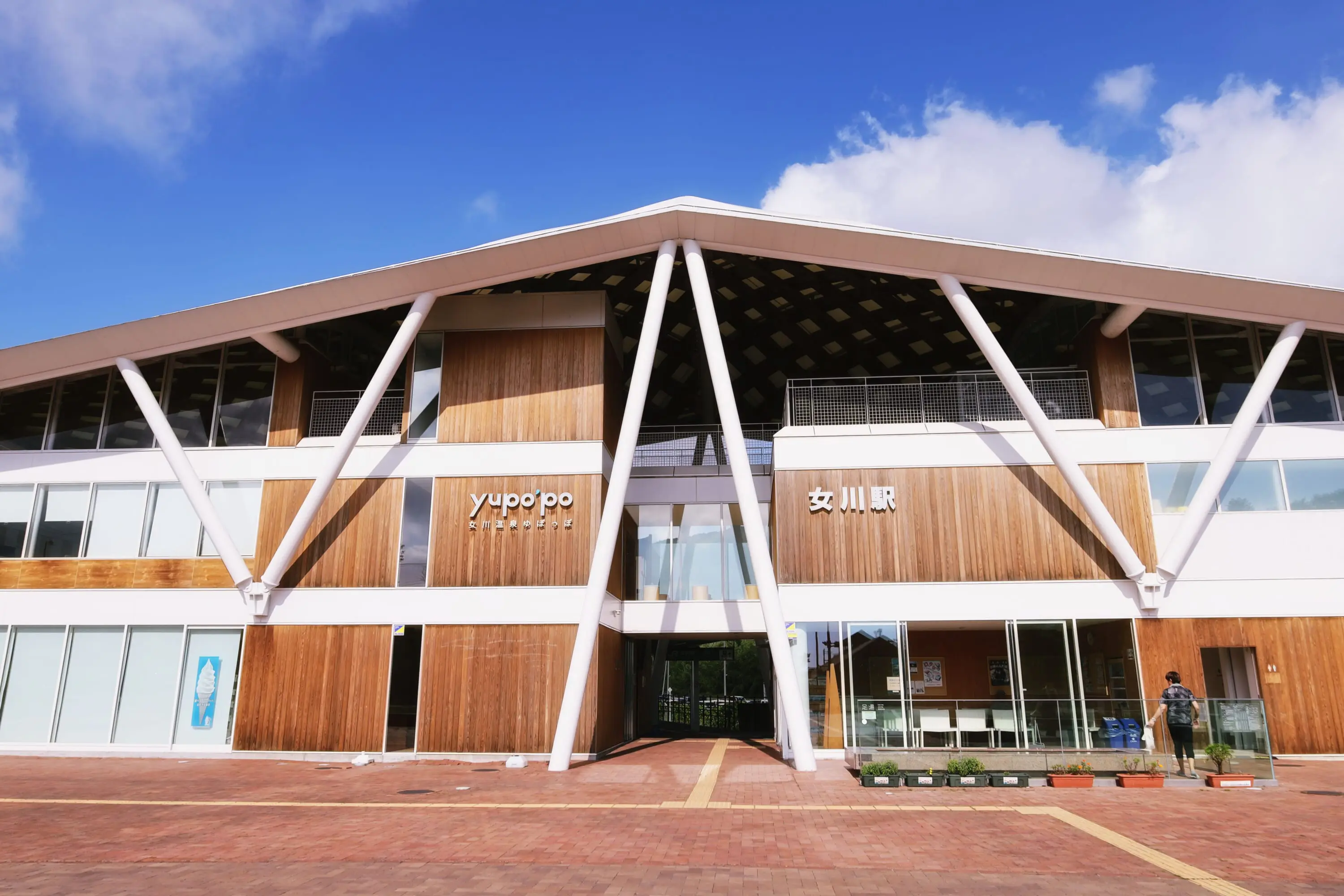
Local Station Succession
Perhaps the most potent symbols of the town’s rebirth and resilience are the new train station and bayfront plaza. The last stop on the Ishinomaki Line, the rebuilt Onagawa Station was designed by renowned architect Shigeru Ban as a multistory community gathering spot, instead of just the railway depot that it had been. Ban, in the aftermath of the tsunami, also designed for Onagawa cardboard-and-canvas privacy partitions at emergency shelters and temporary housing units made of stacked shipping containers.
The new station, completed in 2015, has a bathhouse, shops and a third-floor loft with views of Onagawa Bay, and it’s 150 meters inland from its previous location, creating distance from the sea. The building has won widespread praise for its wooden lattice ceiling structure and striking curved rooftop evoking a gull’s wings but also for the excitement that it has brought to the town center.
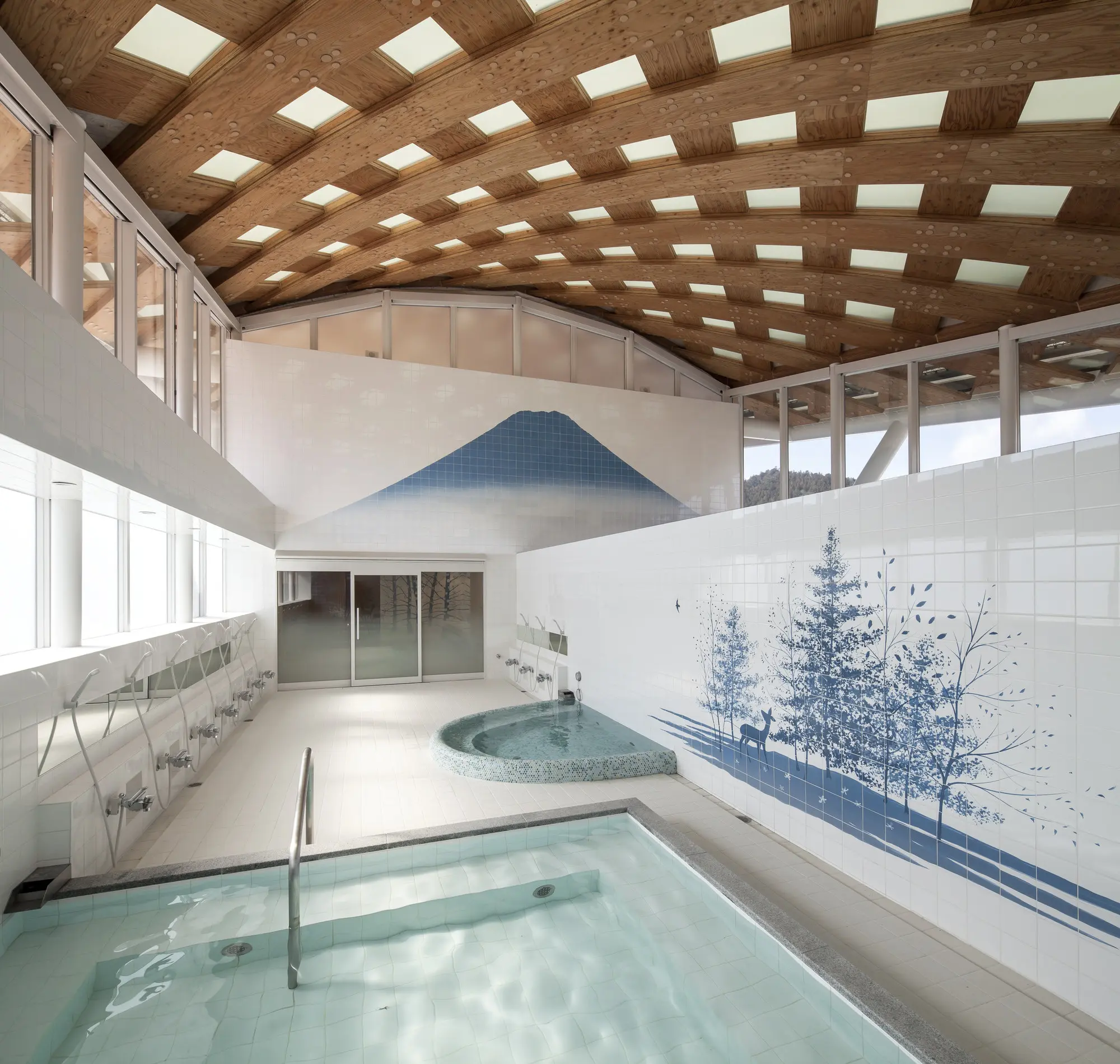
Inside the Yupo’po bathhouse. Photo by Hiroyuki Hirai, courtesy of Onagawa Onsen Yupo’po.
A Prospering Plaza
The Seapal Pier plaza, conceived by Tokyo-based Azuma Architect and Associates and extending from the station to Onagawa Bay, is a retail complex of wooden buildings that has added a new dimension to the local fisheries-led economy: a tourist attraction and a vibrant nightlife scene. It’s given local business owners like Yoshikatsu Aihara, of Aihara Fruits, a second chance. The crushing waves had robbed him of everything — not just his shop but also the home he used to run his business.
The plaza also has helped to lure a new generation of younger entrepreneurs and artisans to Onagawa. There’s a scuba diving store, an artisanal soap maker, a store specializing in streetwear, a guitar shop and a bar run by a local graffiti artist — not exactly the kinds of retailers you’d typically encounter in one of Japan’s more remote fishing communities. The plaza’s decorative tiles, which feature fish and boat motifs, are the handiwork of one of the shops, Minatomachi Seramika Kobo. Owner Narumi Abe said her ceramics atelier grew out of an informal gathering of housewives that had met for years before the disaster. “We wanted to get back to our hobby, but we didn’t know how to do something for the town. Then we met Shigeru Ban who helped facilitate the donation of a kiln from Kyoto University,” Abe said.
Onagawa officials had a good idea of what stores should go in the plaza and what kinds of facilities residents would need, said Rie Azuma of Azuma Architect and Associates. “There was a committee for town planning, including design, which briefed us in advance,” she added. During the rebuilding phase, visitors came from as far away as the southwestern island of Kyushu, and some were so taken by the place that they ended up staying.
Even on a weekday, a sizable crowd has turned up at Seapal Pier. People form queues for the locally caught grilled clams and rice bowls topped with raw scallops. On the grass, children eat shaved ice under a cerulean sky. “I’m happy to see people coming back to visit after the earthquake. And I’m especially happy that people from the town are using the facilities,” said Azuma. “When I saw children running around the plaza, I thought, ‘This was a good project.’”
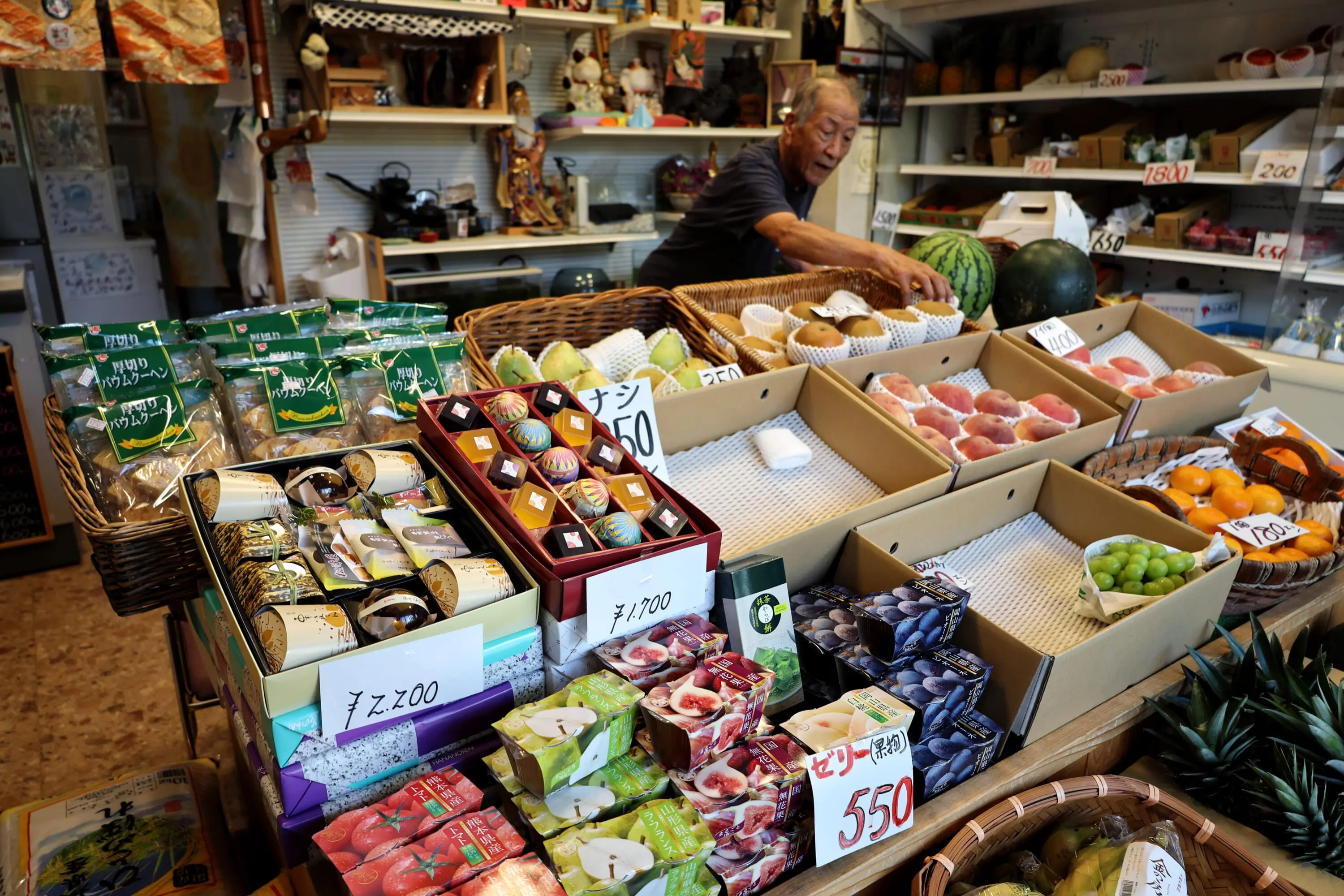
Yoshikatsu Aihara of Aihara Fruits, inside Seapal-pier
Generation Alpha Aspirations
In the immediate aftermath of the disaster, Endo, the Onagawa tourism official, had his doubts about the town’s future. There were no trees, no buildings. Hardly anything of the old town was left to be salvaged. Endo’s two children were still in primary school, and he didn’t see how he could raise them here. “There was nothing. However, it was my kids who wanted to live in Onagawa. They liked it! As a father, I had to show them that I would contribute to the recovery, too. Everyone who came back wanted to help, so we were all pushing for the same thing,” he said.
Many of the town’s elders in their 60s and 70s who might normally have steered the reconstruction process stepped aside to let younger members of the community take the lead. “That’s why there is a skate park in town,” Endo added. It was an act of grace and generosity that gave Endo and others in the community hope and an empowering sense of ownership. “I felt a sense of responsibility because the project we were about to build was the first step toward creating a new town,” he said. “I felt that the people of Onagawa were thinking about the future rather than looking back to the past.”
This article was originally published in the special issue En Route.

